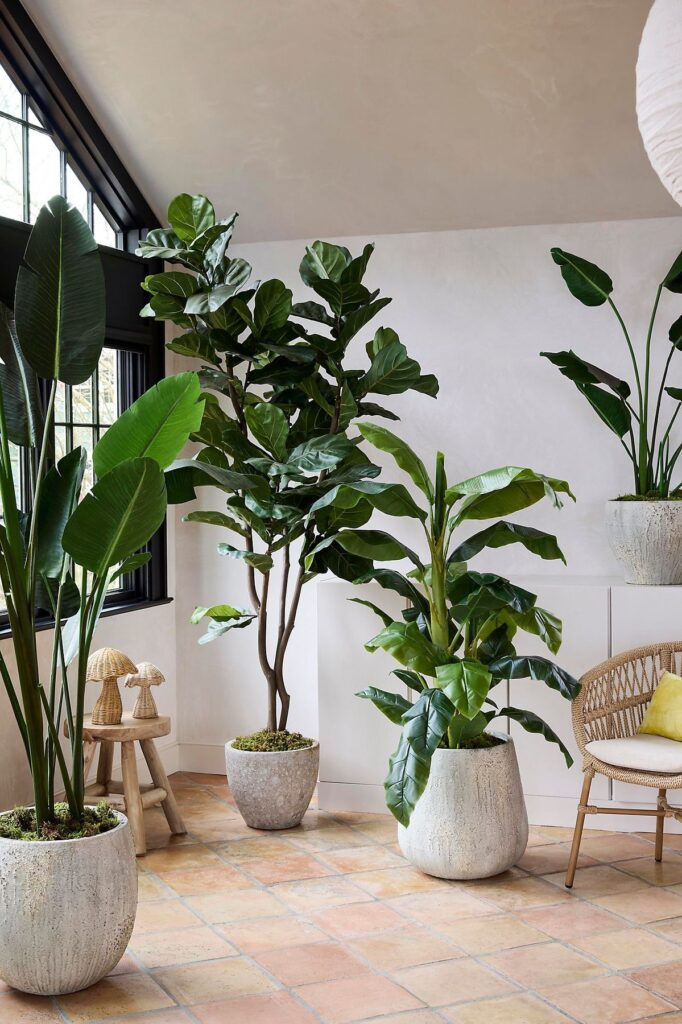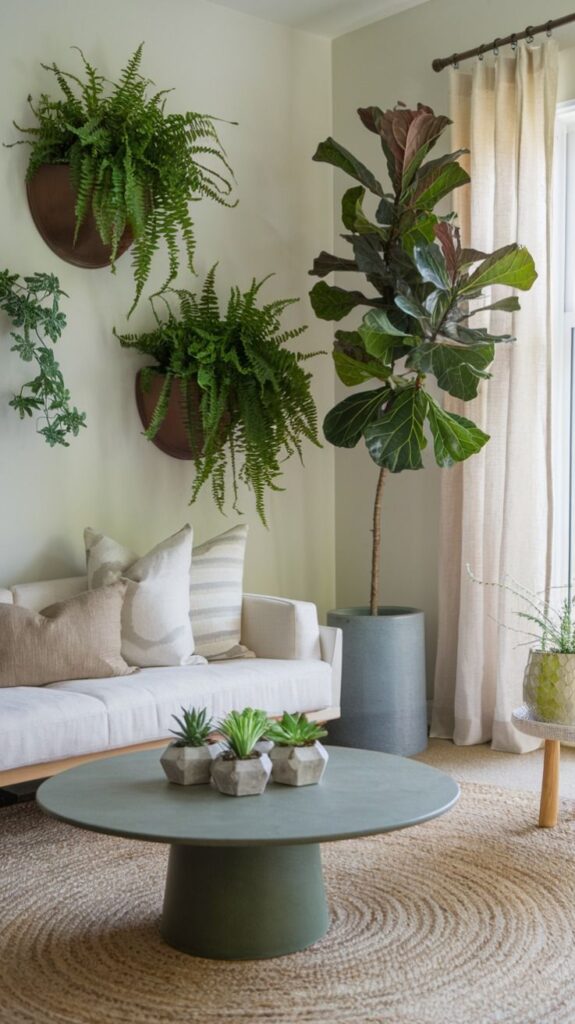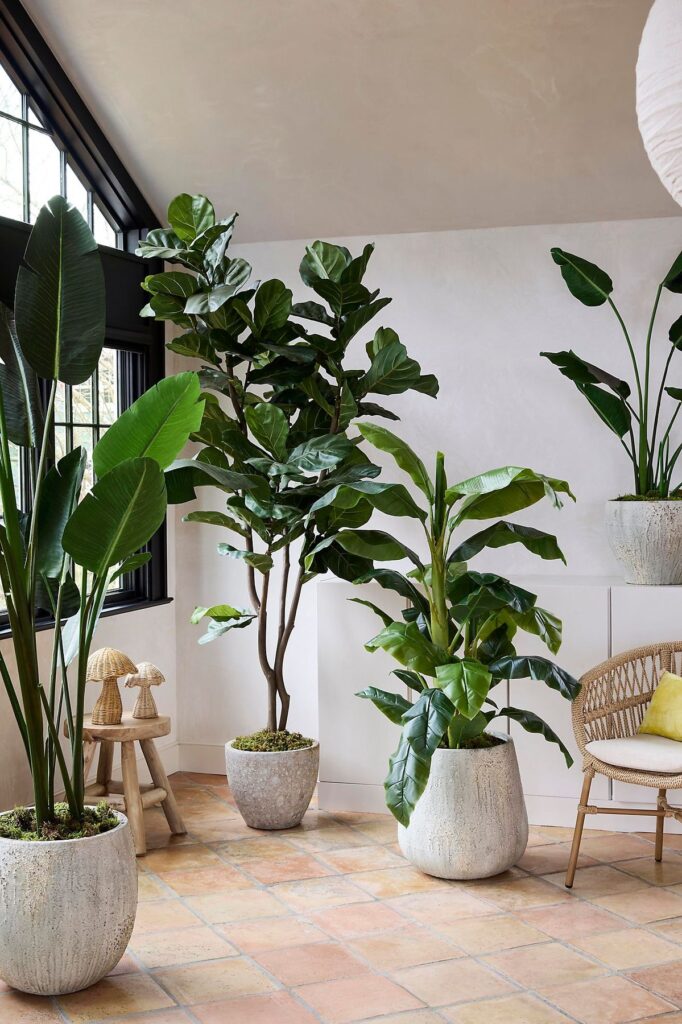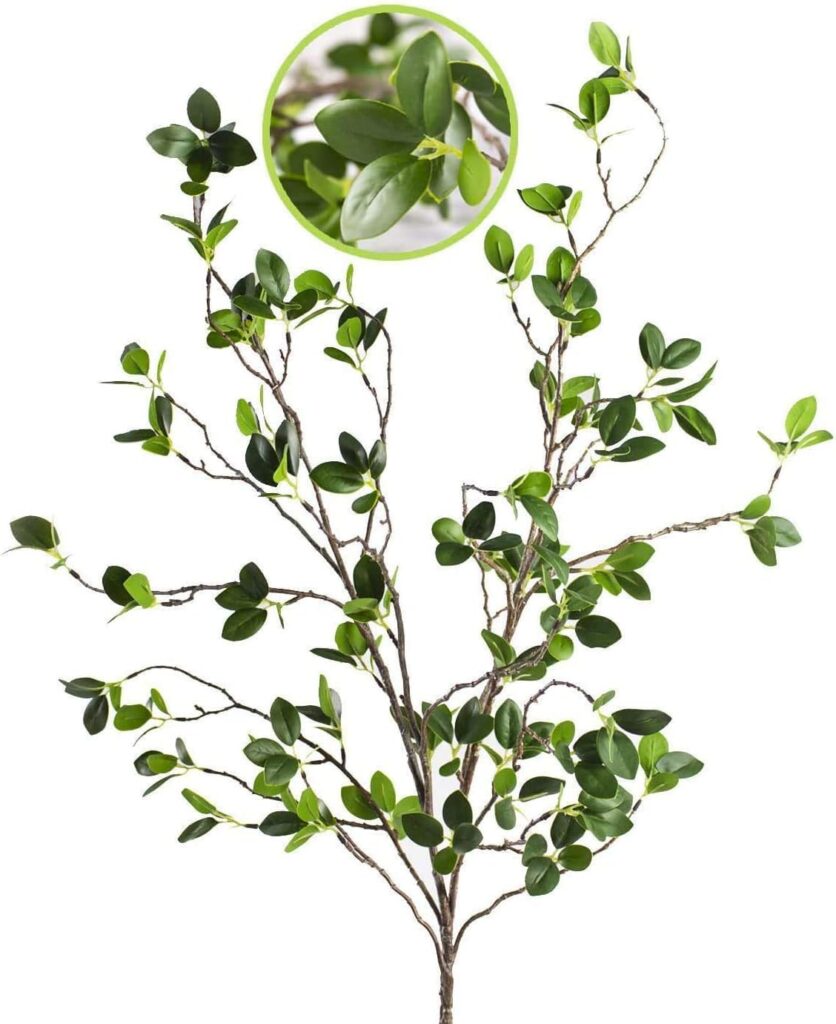What Are the Best Artificial Plants for Your Living Room?
Your living room deserves greenery that stays fresh forever. But with so many fake plants out there, how do you choose the right ones? Let me help.
The best artificial plants for living rooms combine realism, durability, and style. Opt for fiddle leaf figs, monstera, or olive trees for statement pieces, and use smaller ferns or eucalyptus for accents. Quality matters – poor fake plants can look tacky and fade quickly.

I’ve spent years sourcing and designing artificial plants that fool even the sharpest eyes. Below, I’ll break down exactly what works – and what doesn’t – when decorating with faux greenery.
What Plant Is Best for Living Room?
Not all artificial plants work equally well in living rooms. Some look fake, while others transform your space completely.
For living rooms, large leafy plants like fiddle leaf figs and rubber plants work best. They fill empty corners naturally. Smaller plants like succulents or ferns are perfect for shelves and tables.

Top 3 Artificial Plants for Living Rooms
- Fiddle Leaf Fig
- Height: 5-6 feet ideal for corners
- Leaf size: Large, glossy leaves look most realistic
- Stem detail: Should have natural-looking brown stems
- Leaf holes: Must have irregular, natural-looking splits
- Color: Deep green with slight variegation
- Arrangement: Best in groups of 3-5 stems
- Trunk texture: Should show realistic bark details
- Leaf density: Sparse leaves look more authentic
- Pot style: Terracotta or cement pots work best
| Plant Type | Best Placement | Realism Tip |
|---|---|---|
| Large trees | Empty corners | Add weight to base so it stands straight |
| Medium shrubs | Next to sofas | Mix with real plants for better illusion |
| Small plants | Shelves/tables | Use odd numbers (3 or 5 together) |
I learned this the hard way when a client ordered 50 cheap fiddle leaf figs that all looked identical. Real plants have variation – your artificial ones should too. Look for slight color differences in leaves and natural stem curves.
Can We Keep Artificial Plants in the Living Room?
Some designers frown on fake plants, but I’ve found they can work beautifully – if you follow these rules.
Yes, you can absolutely use artificial plants in living rooms. The key is choosing high-quality pieces and arranging them thoughtfully. Avoid plastic-looking plants and dust them regularly.

How to Make Artificial Plants Work in Your Living Room
3 Golden Rules:
- The 80/20 Rule
- Mix 80% artificial plants with 20% real ones
- Real plants provide natural movement and scent
- Example: Use real herbs on coffee tables with fake greenery elsewhere
- The Touch Test
- Run your hand over leaves – they shouldn’t feel plasticky
- Good quality silk or latex plants pass this test
- Bend a leaf – it should flex naturally, not snap
- The Lighting Rule
- Place plants where light hits them naturally
- Avoid direct sunlight which can fade colors
- Use spotlights to create realistic shadows
Common Mistakes to Avoid:
| Mistake | Why It’s Bad | Better Solution |
|---|---|---|
| Putting all fake plants together | Looks like a store display | Mix with real plants and other decor |
| Never dusting them | Makes plants look obviously fake | Wipe leaves monthly with damp cloth |
| Choosing wrong sizes | Throws off room proportions | Measure your space before buying |
Last year, I helped a hotel lobby redesign using these principles. We used artificial palms near windows (where real ones would die) and mixed them with real flowering plants. Guests couldn’t tell the difference.
What Should I Look for When Buying Fake Plants?
The difference between a cheap fake plant and a good one? About 20 feet – that’s how far you need to stand before the cheap one looks real.
When buying artificial plants, check material quality, color variation, stem details, and weight. The best plants use silk or latex leaves, have natural color gradients, and come in weighted pots.

The Fake Plant Buyer’s Checklist
Material Matters Most
- Leaf Materials
- Silk: Best for realistic texture, but fades in sunlight
- Latex: Most durable, holds color well
- Plastic: Only acceptable for certain succulents
- Stem Construction
- Look for wired stems you can bend naturally
- Avoid perfectly straight stems – real plants have curves
- Check for realistic bark texture on woody stems
Color Realism
| Color Feature | Cheap Plants | Quality Plants |
|---|---|---|
| Base color | Flat, single shade | Multiple subtle shades |
| Veins | Painted on | Textured into leaf |
| New growth | Missing | Lighter colored tips |
Weight and Stability
- Good plants have heavy bases (concrete or sand-filled)
- Pots should look authentic (real wood or ceramic)
- Stems should stay upright without support
I once bought two identical-looking artificial ferns online – one cost $15, the other $150. Side by side, the difference was shocking. The expensive one had:
- 7 different green shades in the leaves
- Realistic brown fibers on the stems
- A pot that looked like real aged terracotta
What Is the Problem With Fake Plants?
Artificial plants get a bad rap – sometimes deservedly. But knowing the pitfalls helps you avoid them.
The main problems with fake plants are poor quality materials, unrealistic colors, and dust accumulation. Cheap plastic plants look fake and degrade quickly, while even good ones need regular cleaning.

Solving Common Fake Plant Problems
Problem 1: They Look Fake
Solution:
- Buy from specialty sellers (not general home stores)
- Check for color variation in leaves
- Avoid perfectly symmetrical arrangements
Problem 2: Dust Accumulation
Cleaning Schedule:
| Plant Type | Cleaning Method | Frequency |
|---|---|---|
| Large leaves | Damp microfiber cloth | Monthly |
| Small leaves | Compressed air | Every 2 months |
| Delicate flowers | Soft brush | Seasonally |
Problem 3: Fading Over Time
Prevention Tips:
- Keep out of direct sunlight
- Rotate plants periodically
- Choose UV-resistant materials
Problem 4: Static, Unnatural Shapes
Fixing Techniques:
- Gently bend stems into natural curves
- Separate leaves that arrive flattened
- Add slight imperfections intentionally
When I first started Botanic Blossoms, we made all these mistakes. Our earliest products yellowed within months. Now we:
- Use UV-stabilized materials
- Hand-paint color variations
- Design with natural asymmetry
Conclusion
Great artificial plants can transform your living room with zero maintenance. Focus on quality materials, realistic details, and proper placement for best results.

